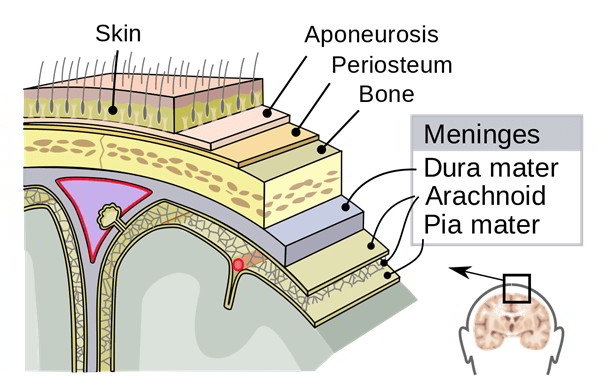The meninges consist of three membranes arranged in layers. From deepest to most superficial they are the pia mater, arachnoid mater, and dura mater.
The pia mater is the very thin, deepest membrane. It tightly envelops both the brain and the spinal cord and penetrates into each groove and depression. It contains many blood vessels that nourish the underlying brain and spinal cord.
The arachnoid mater (“spider mother”) is the middle membrane. It is a thin, weblike membrane without blood vessels that does not penetrate into the small depressions as does the pia mater. Between the pia mater and the arachnoid mater is the subarachnoid space, which contains cerebrospinal fluid. This clear, watery liquid serves as a shock absorber around the brain and spinal cord.
The dura mater (“tough mother”) is the tough, fibrous most superficial layer. In the cranial cavity, it is attached to the internal surfaces of the cranial bones and penetrates into fissures between some parts of the brain. A fissure is a deep, wide groove that separates brain regions. In the vertebral canal, the dura mater forms a protective tube that extends to the sacrum. It does not attach to the bony surfaces of the vertebral canal but is separated from the bone by an epidural space. Adipose tissue fills the epidural space and serves as an additional protective cushion. Physical trauma can cause tearing of blood vessels extending between the dura and arachnoid maters. The pooling of blood between the two meninges, which is called a subdural hematoma, creates an artificial space called the subdural space.


 (56 votes, average: 4.72 out of 5)
(56 votes, average: 4.72 out of 5)